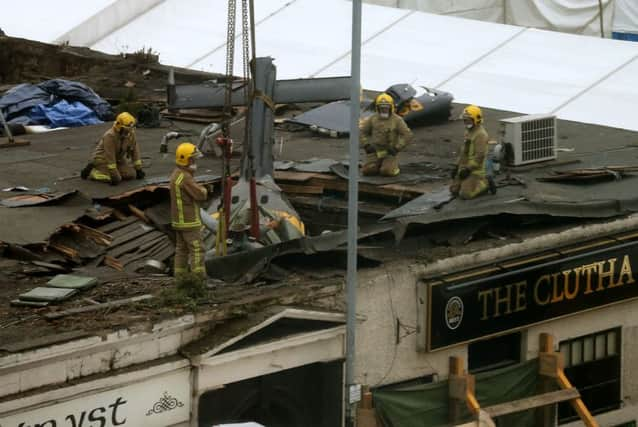‘Inaccurate’ fuel readings on Clutha helicopter months before fatal crash
This article contains affiliate links. We may earn a small commission on items purchased through this article, but that does not affect our editorial judgement.


A technical log sector record for the G-SPAO Eurocopter EC135 helicopter noted defects with its fuel contents indications on 8 July 2013, with both overreadings and underreadings of the fuel on board.
The inquiry heard from Bryan Meredith, a quality assurance engineer with Bond Air Services, the aircraft’s operators, that a fuel sensor in the main fuel tank was replaced.
Advertisement
Hide AdAdvertisement
Hide AdBut two days later, records for the helicopter show there were further defects, with “spurious” readings of the “main fuel quantity indications.” The following day, the aircraft’s forward fuel sensor was replaced.
The inquiry heard how Mr Meredith carried out a series of audits on the aircraft between April and August that year, including a physical survey. However, the audit did not require the helicopter’s fuel system to be inspected.
Asked by senior counsel Sean Smith QC, for the Crown, whether he would have asked about any issues with the fuel system or sensors when talking to engineers, Mr Meredith, 58, replied: “Not that I can remember.”
The inquiry heard how on 1 July 2013, another EC135 helicopter, based at the SECC in Glasgow, registered inaccurate readings in its number one supply tank.
The indications suggested it was full with 47 kilograms of fuel “all the time irrespective of the fuel contents.”
Both fuel transfer pumps on the G-CGPI aircraft were turned off, allowing the fuel in both supply tanks to be consumed, but the number one tank continued to indicate it contained 47 kilograms, even when the red low fuel warning light came on.
The inquiry later heard from PC Alistair Rennie, a Police Scotland air observer, who described the pilot of the Clutha helicopter as a “safe pair of hands.”
Mr Rennie, 45, had previously flown alongside Captain David Traill, who he praised as “extremely capable.”
Advertisement
Hide AdAdvertisement
Hide AdHe was questioned by Donald Findlay QC, representing the family of victim, Robert Jenkins, whether he would characterise Mr Traill as someone who was a “stickler for rules,” or someone who was “gung ho.”
Mr Rennie replied: “He was a stickler.”
“What makes you say that?” Mr Findlay asked.
“It would be an observation of him, but he was very much a safe pair of hands is how I’d describe Captain Traill,” Mr Rennie explained. “Extremely capable, extremely confident, and entirely someone who would not cut corners or look to do anything other than how it should be done.”
Mr Rennie was a colleague of Tony Collins and Kirsty Nelis, two police air observers who were among the ten dead following the crash.
He agreed with Mr Findlay’s assessment of the crew’s experience in the helicopter - as had previously been discussed with another air observer colleague appearing as a witness at the FAI - saying Mr Collins had more experience than Ms Nelis, but she was not inexperienced.
Mr Rennie was the rear observer in the helicopter on the day shift on 29 November 2013, just hours before the fatal crash later that evening.
The inquiry was shown a log of flights from that shift, with the first journey from Glasgow to Inverness between 9.05am and 10.15am.
Mr Rennie said this was to refuel at Inverness before going on to a search - with a full tank - at nearby Strathpeffer.
The search took place during the second flight between 10.50am and 12.25pm before the helicopter landed in Inverness to refuel again.
Advertisement
Hide AdAdvertisement
Hide AdFrom there they conducted a short search of Dores, near Loch Ness, before returning to Glasgow at 2.35pm, when Mr Rennie completed paperwork before the end of his working day and handing over to the late shift.
Asked by Mr Smith if he was aware of any defects or anything “unusual” during those flights, Mr Rennie, an air observer with the force since 2006, replied: “No, I wasn’t.”
Mr Smith asked: “Was there any discussion between yourself and the pilot about any issues connected with any aspect of the aircraft? Any problems it might have?”
“I don’t recall any,” Mr Rennie answered.
The inquiry before Sheriff Principal Craig Turnbull continues at the temporary court at Hampden Park on Monday.